
Japan promotes Wagyu beef
By Jack Kazmierski
Products Meat &Poultry Japan Wagyu Beef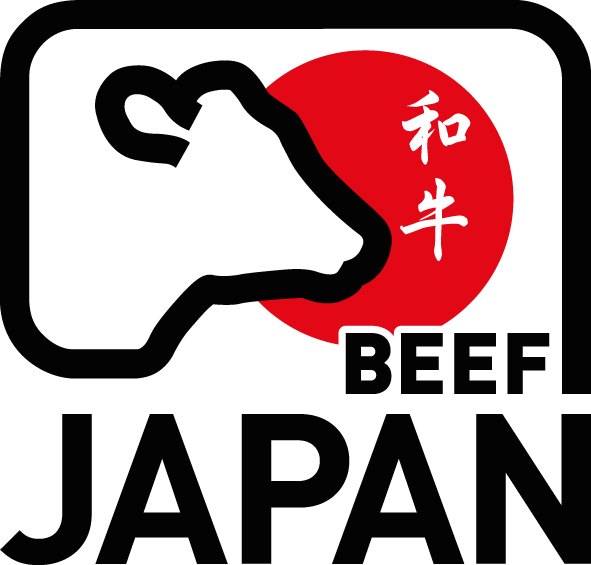
Sponsored by The Japan Livestock Products Export Promotion Council (J-LEC)
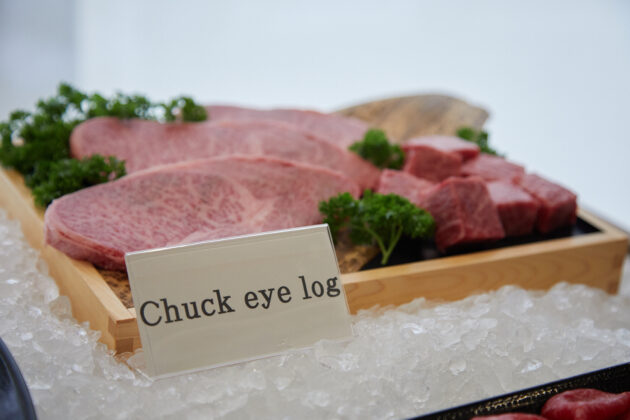 A sample of some of the cuts of Wagyu beef.
A sample of some of the cuts of Wagyu beef. More than 100 industry professionals attended the Wagyu Seminar, hosted by the Japan Livestock Products Export Promotion Council (J-LEC). The event took place on September 5 at the Westin Harbour Castle Hotel in downtown Toronto.
The Wagyu Seminar was organized to promote the export of Wagyu beef from Japan, and to explain what sets Wagyu apart from other beef products. Invited guests included restaurant owners, retailers, butchers, importers, wholesalers and other industry professionals.
After Takuya Sasayama, the Consul General of Japan, welcomed everyone to the Seminar, the audience heard from Toshiro Kawashima, Director of the Japan Livestock Products Export Promotion Council (J-LEC). Kawashima explained that the export of Japanese Wagyu beef has been growing steadily over the past few years, and that Japan now exports Wagyu beef to over 40 countries.
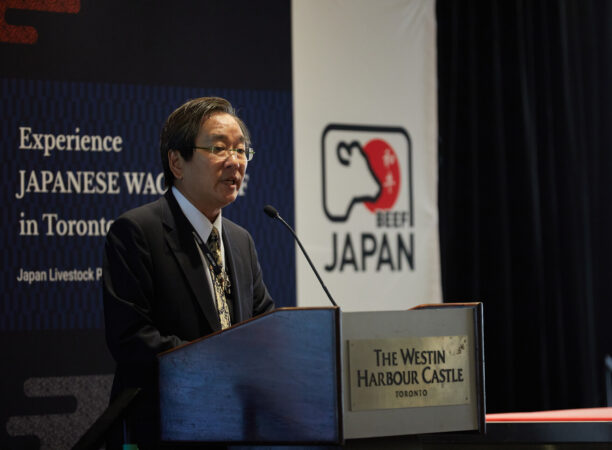
Takuya Sasayama, the Consul General of Japan, welcomes the audience.
Wagyu defined
Kawashima started his presentation by explaining that the word “Wagyu” comes from two Japanese words: “Wa” means “Japan, and “gyu” means beef, cow or cattle. “So it is our position that Wagyu is the purebred Japanese cattle,” he added. “It is meat that was born, raised and processed in Japan.”
The Japanese take their Wagyu meat very seriously, and Kawashima insisted that Japanese Wagyu is superior to Wagyu from other countries. “Japanese Wagyu has several outstanding characteristics,” he explained. “It has rich marbling and very fine meat fibre that contributes to its smooth and juicy texture.”
Kawashima touted the health benefits of Wagyu beef. “When you look at the composition of the fatty acids in Wagyu, oleic acid is found in higher concentrations than in other beefs,” he explained. “Oleic acid is famously found in olive oil, which is part of a healthy Mediterranean diet.”
He then explained why Wagyu beef has such a smooth texture. “The higher percentage of these fatty acids leads to a lower melting point of around 20 degrees Celsius, which is where your body temperature is,” he said. “That’s why Wagyu literally melts in your mouth.”
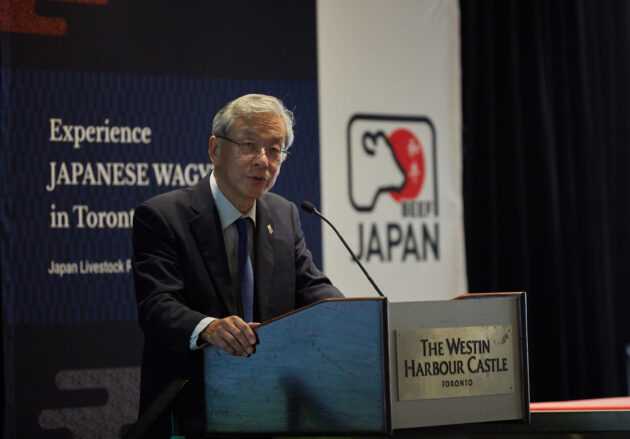
Toshiro Kawashima, director of the Japan Livestock Products Export Promotion Council (J-LEC), speaks about the Wagyu cow pedigree.
Family farms
Most of the Wagyu breeding and fattening farms in Japan are family owned, and each cow is treated “like a family member,” Kawashima explained. “Wagyu cattle are treated with great care,” he added. “They get a health check every day, they are brushed every day, and they’re fed protein-rich concentrates and roughage, such as rice. Wagyu cattle are raised in healthy conditions.”
The fattening period, according to Kawashima is about 600 days, and the cattle are shipped at an age of between 29-30 months, and at a shipping weight of about 800 kg (1,763 lb).
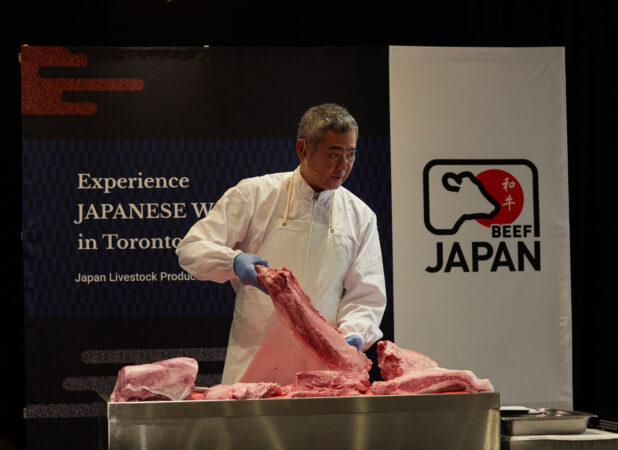
Master butcher Tomohiro Tanaka shows off a variety of cuts of beef.
The Wagyu pedigree
Kawashima stressed that authentic Wagyu beef is traceable, and that the Japanese go to great lengths to assure the pedigree of each Wagyu cow. The country has a pedigree registration system that dates back over 100 years, and is managed by the Wagyu Registration Association.
Each Wagyu cow receives a certificate that includes its nose print, which is as individual as a human fingerprint, according to Kawashima. Moreover, all cattle raised in Japan are required to keep a 10-digit identification number as they make their way through the entire supply chain, as well as DNA samples.
“In Japan, only 100 per cent purebred [animals] registered for pedigree are allowed to be called Black Wagyu,” he explained. “In the United States or Australia, for example, the number of Wagyu cows as breeding stock is limited, and they are commonly crossbred with other breeds.”
Kawashima said that even Wagyu cows that are only 50 per cent purebred are labelled as Wagyu in other countries. “That’s one of the reasons why Japanese Wagyu is different from Wagyu in those countries,” he concluded.
The Japanese database of Wagyu beef is so complete and thorough that consumers can scan a QR code at the store, or on their package of Wagyu beef, and find out when and where that cow was born, when it was processed, the grade of the meat, and much more.
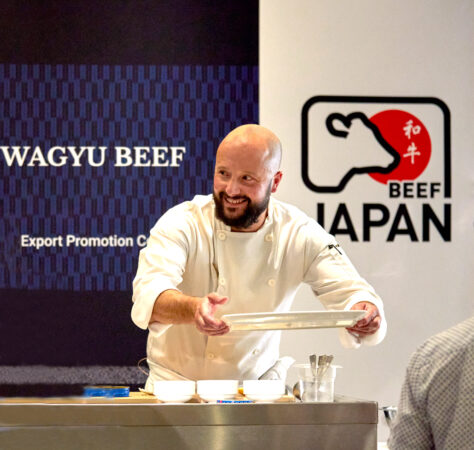
Chef Patrick Kriss serves up a Wagyu beef/caviar appetizer.
Live demonstrations
The program concluded with two live demonstration. Master butcher Tomohiro Tanaka, who lectures at the Federal Meat Academy of Japan, demonstrated how to slice up a side of cattle into steaks and other cuts. During his presentation, hotel staff brought out cooked samples of all the cuts for everyone to try.
Finally, Chef Patrick Kriss, founder of the Alo Food Group, and owner of two restaurants with a Michelin star, prepared a meal using Wagyu beef, caviar, and a number of other exotic ingredients.
Print this page